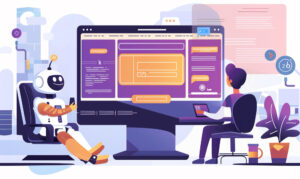Top 10 Edge and IoT Predictions for 2024
- 1 Companies will increase their focus on IoT.
- 2 Edge and IoT enable intelligence.
- 3 Tech Data and Predictions for 2024
- 3.1 Data-centric infrastructure for protection, governance, and sovereignty
- 3.2 Cloud-adjacent data architecture
- 3.3 AI will leave the lab:
- 3.4 Data will become a product:
- 4 The cloud is approaching the Edge.
- 5 Other predictions and duplication
- 6 Conclusion:
From advances in generative artificial intelligence to innovations in quantum computing, 2024 is seen as a revolutionary period in which technology will progress significantly. We try to polish our crystal ball and analyze what this year will bring to the edge/IoT industry. Let’s make some predictions about what will happen this year and then analyze its impact and role.
With 2024 already looming, cloud, AI, and IoT experts give their predictions for this coming year.
It’s a big order, but we pride ourselves on being cutting-edge experts, and our past predictions have been more right than wrong. So, let’s move on to IoT predictions for 2024.
Companies will increase their focus on IoT.
According to Forrester’s research, organizations are contributing significantly to the rapid growth of IoT, with 85% of companies currently using IoT technologies or planning to do so in the next year.
For organizations, the Internet of Things offers a variety of benefits. In recent years, there have been several successful trials, such as companies introducing unique devices that interact with consumers’ mobile phones and allow them to display detailed product information on their screens.
However, the manufacturing sector is the one driving IoT adoption. Many companies have realized the benefits of interconnecting their equipment, allowing them to collect information about the health and efficiency characteristics of almost all components and transmit this information to other devices.
Technology advocates have long predicted predictive maintenance, but only the most prominent organizations with significant long-term investments in IoT development have adopted it. Smaller businesses are also likely to adopt IoT-based technologies due to their expertise, which is improving awareness of the usefulness and benefits of such solutions. They will do so with confidence, knowing that their investment will pay off.
Edge and IoT enable intelligence.
Edge and IoT instantaneously gather data from the real world. However, they must handle this data intelligently. We can call it artificial intelligence or machine learning, but applying those technologies to interpret all this data at the border is another use case.
A real-world example would be things like oil rigs. There is no data centre nearby. There are no IT people there. They have to work all the time, be resilient, and have intelligence, but they also have to be connected to public and private clouds. Data generated by Edge and IoT help companies improve business agility, create efficiencies, and deliver better customer experiences. The advantage is that the calculation acts on the data in real time.
Edge and IoT enable flexibility and agility.
Edge + IoT solutions can enable companies to remotely manage, monitor, and secure thousands of locations and devices. These services allow business continuity with the ability to run applications and analytics at every point in a company’s digital journey.
We used to start with mainframes, and everyone thought that everything would be done only on centralized mainframes. Then, the pendulum swung to microcomputers, then came PCs, and then centralized clouds again. We thought everything would be done only in the cloud, but it is becoming distributed again.
The truth is that intelligent tasks will be executed on both sides. There will be a lot of computations at the edge and a lot of computing going on in the private and public cloud. Done well, it allows for broader management, predictive decision-making, and resolving threats and anomalies.
With consistent infrastructure and operations integrating edge and hybrid clouds, businesses can become faster, cheaper, and more secure organizations.
Tech Data and Predictions for 2024
Data-centric infrastructure for protection, governance, and sovereignty
Cybersecurity solutions have become essential. Technologies such as AI, blockchain, and quantum computing are emerging as crucial pillars in protecting data and systems. These technologies promise to strengthen cybersecurity by providing more robust and adaptable solutions to face growing threats in the digital world.
Per our point, predictions for 2024 include using AI to form new data architectures and new patterns for processing and analyzing it. Thus, they will become valuable information with higher levels of security and protection, aligned with the requirements of governance, sovereignty, and regulatory compliance.
Cloud-adjacent data architecture
It is the next logical step in the development of a hybrid multi-cloud. This approach allows customers to maintain control of their data, optimize costs, and deliver high performance for their most demanding workloads. And the best thing is that it is achieved without compromising performance.
There is expected to be a more incredible migration of applications from public clouds to their infrastructure. Such infrastructure may be located on-premises or hosted at a data centre provider. This can be a private cloud, a simple virtualization environment, or even a legacy ICT infrastructure.
In 2023, the technology landscape and business meetings will be dominated by artificial intelligence (AI), with new use cases emerging almost daily. This has put data management under the microscope as organizations have sought to use AI to transform their businesses. As a result, data strategy has now become a business strategy. Cloudera, the data company for enterprise artificial intelligence, anticipates the trends of the year we have started, focusing on AI, the edge, accessibility, and dEdgeas a product.
AI will leave the lab:
AI is moving so quickly that making predictions about how it will be used a year from now is challenging. However, one certainty is that AI will move from the laboratory to large-scale production in 2024, unleashing a wave of new use cases. We have already started to see the power of AI in industries such as health sciences, where it is used to drive research, doubling the number of new medicines available for testing. This is just the tip of the iceberg, and we will only see the true power of AI once it is used more widely across various industries.
Data will become a product:
In 2024, data will no longer be a valuable asset and will become a product. This is the next vital step in data maturity. Roles like the Product Owner, which reinforce product ethics, will become familiar as organizations genuinely seek to understand their data, helping to drive meaningful and actionable insights. As a result, organizations will be able to build a trusted data set that is easier to maintain and mobile, facilitating greater collaboration between teams on a global scale. This, in turn, will allow organizations to much more effectively capitalize on the wave of AI innovation, building trustworthy data to drive trustworthy AI.
The cloud is approaching the Edge.
Migrating resources closer to the edge is a fundamental development in the evolution of Cloud Computing. It comes from growing customer demand for faster access to their applications or platforms in more locations. Previous research has shown that even a millisecond delay can result in a drop in traffic; Moving to the Edge brings workloads closEdgeo your users.
The future of cloud architecture requires precision in resource placement to meet the growing demand for efficient and responsive services. Cloud providers must actively facilitate dynamic resource management to navigate this evolving terrain, emphasizing flexibility and responsiveness in our increasingly distributed computing environment.
Moving more Cloud Computing to the Edge means efficient data management will be a focus. The emphasis will increasingly be on processing and managing data as close as possible to its source, mitigating the need for widespread transmission of information to other points. This approach improves efficiency and addresses data transfer’s regulatory and compliance challenges, offering a more secure and optimized computing environment.
Other predictions and duplication
We would say that some of these predictions have not yet fully materialized. But we will stand firm and double down on my prediction. We still think these predictions hold for edge IoT in 2024 (we’ve already seen some evidence suggesting they’re not dire Predictions). Hyperscalers reinvent and disrupt at the edge.
Cloud and other hypEdgealers have tried to be more prominent players at the edge. In recent years, there’ve been many failures and abandoned efforts.
Let’s face it: hyper scalers know how to scale; they must abandon the “send everything to the cloud” mentality and figure out how to deliver more value to companies building edge/IoT solutions.
Conclusion:
By analyzing IoT trends and their implications, you can understand the importance of incorporating the Internet of Things into your organization. Intelligent cities and factories are now a reality, and the potential of IoT continues to expand beyond what has been achieved so far.

















